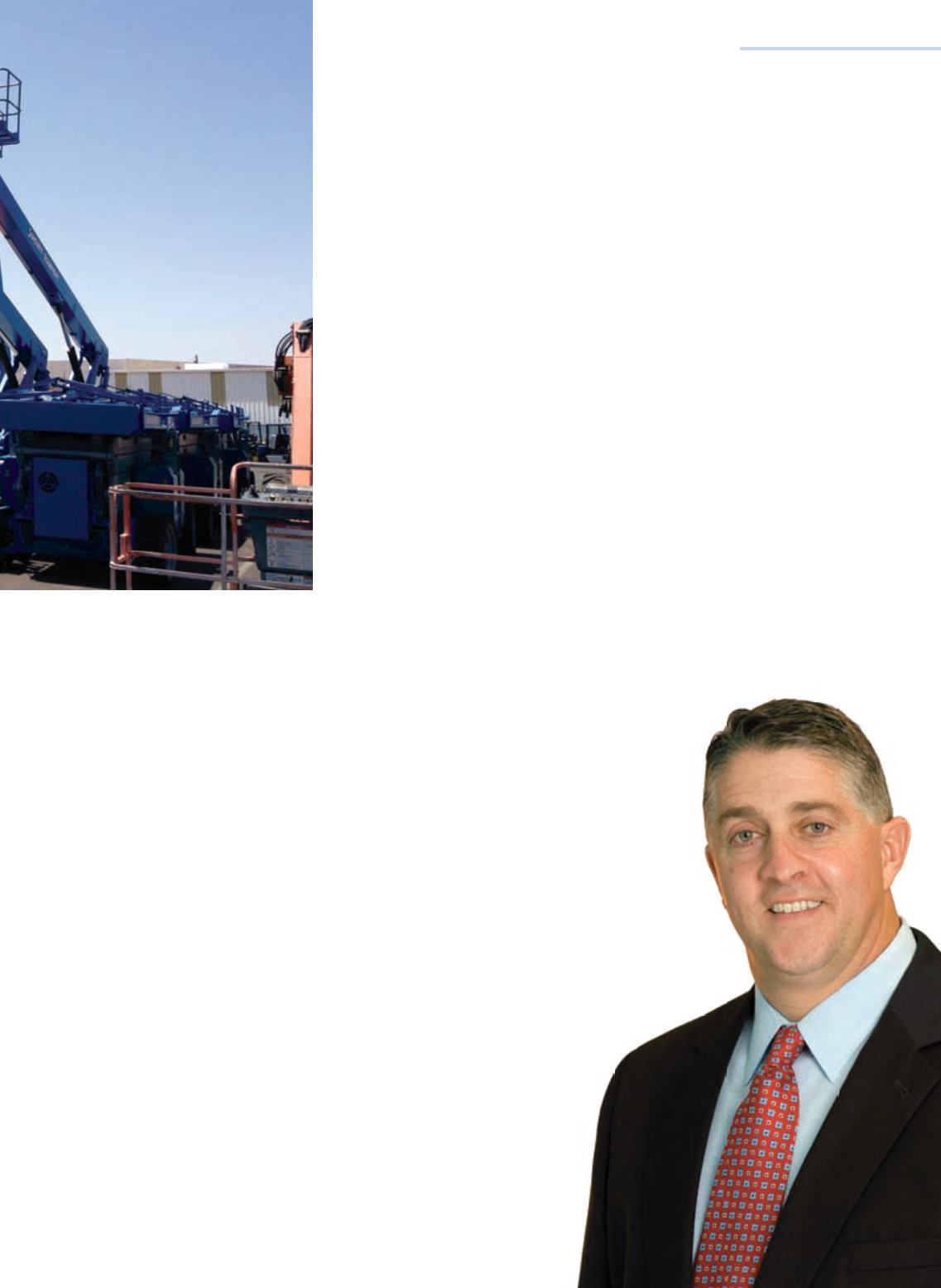
23
NOVEMBER-DECEMBER 2013
ACCESS, LIFT & HANDLERS
TRAILER-MOUNTED AWPS
RENTAL REPORT
project, Sunstate’s diversification has allowed
it to branch-out to applications in oil and gas,
agriculture and warehousing.
“This is what happens when you live and
die by the ups and downs of the Southwest
construction cycle,” Watts jokes.
For the company as a whole, though, if the
Southwest is its home, Texas is its cash cow.
“The greatest percentage of our revenue
comes from the state of Texas,” Watts says.
“Texas has been more recession-proof than
most of the other markets we’re in. Many of
the markets in Texas only experienced a minor
slowdown and were fairly steady during the
downturn.”
In terms of types of construction, Texas saw
(and sees) a steady amount of Government-
funded jobs, from military base work to
highway and infrastructure construction. But,
according to Watts, the Lone Star State is
seeing a transition and uptick in commercial
development.
“There’s demand for growing businesses to
put their employees to work in an office,” he
says. “As residential construction begins to pick
up the pace, everything that falls behind it is
our bread and butter – strip malls, schools, the
big box retailers. We’ve got a very broad mix of
that.”
Equipment in demand
Working on those larger developments will be a
number of aerials. Like most rental companies,
Sunstate has seen a push for bigger booms and
taller makes and models of scissor lifts.
“Sixty-foot booms are much more common
than they used to be, and we’re moving into the
80s, 120s and 135s,” Watts says. “Construction
methodologies have changed. It all depends on
the type of construction going vertical.”
Another growth sector is telehandlers. But
Watts says the telehandlers’ popularity is
nothing new.
“All that’s spiked is the overall level of
construction in our market in the United States
as a whole,” he says. “In my mind, it’s been
the last 10 to 15 years where telehandlers have
been the ‘hot item.’ Every jobsite has at least
one if not five. They’re so versatile and useful for
just about every trade; it just makes sense that
demand continues to increase with those.”
Like booms and scissors, telehandlers are
also following the ‘bigger is better’ trend. Where
10,000-pound units used to fulfill a number of
needs on a jobsite, the 12,000-pound class has
now made its entrance.
“People would order 10,000-pound
telehandlers because the units had the capacity
to do whatever they wanted, even if they didn’t
need that capacity every day,” Watts says.
“Now it’s 12,000-pound telehandlers. There’s
definitely been a shift.”
Inside a number of those telehandlers in the
coming years with be brand new Tier 4 final
engines, which manufacturers have started
rolling out over the last year. It’ll be a large
market shift that will see price and rental rate
increases across the board.
“The problem is getting rates up to be on
par with the percentage increase in costs that
have happened,” Watts says of Tier 4 final
machines. “If you have a fleet with only a certain
percentage having Tier 4 final engines, it’s hard
to raise rates on a broad category because of
an engine that some classes of those machines
might not have. It’s going to be a challenge over
time – to make that shift and change.”
Sunstate has worked aggressively over the last
two years to increase its rental rates, a “nonstop
campaign since we started to see things turning
the other direction,” Watts says.
The company has increased its book rates
and its working on its negotiated rates with
key customers. “That’s where a bulk of your
revenue comes from and also where some of
the heavier discounting happens,” Watts says.
“Now that contractors have enough work in
their pipelines, they’re bidding jobs to actually
make money instead of just keep their people
employed. They also recognize that all of their
vendors and suppliers need to make money as
well, so they’re a lot more open to the reality
that rates have to go up for our industry to
be sustainable. It’s a survival tactic; a cash
flow game.”
A game Watts and his team seem poised
to keep playing. With 2014 just around the
corner, Watts says broad-based revenue
Matthew Flannery, chief operating
officer of United Rentals.
streams and rental diversification will keep the
company in line and ahead.
Rental giant
On the other side of the spectrum is United
Rentals, the largest equipment rental company
in the world. In 2012, United’s fleet consisted
of 107,341 aerial units, dwarfing the world’s
second-largest rental company, Sunbelt Rentals,
by more than 67,000 aerials.
“Our merger with RSC in 2012 was an
opportunity to create an even stronger fleet mix
through our combined assets,” says Matthew
Flannery, chief operating officer of United
Rentals. “Since then, we’ve been growing all
categories of fleet beyond historical levels.
The size of our rental fleet at the end of the
third quarter was almost $8 billion of original
equipment cost, up from $7.23 billion at year-
end 2012.”
The rental conglomerate expects non-
residential construction to continue to improve
through 2014 as it reported strong results for the
third quarter of 2013.
Total revenues rose by 8.3 percent for the
company to $1.138 million for the three months
to the end of September, with gross profits up
10 percent to $497 million. General rentals
revenues were up by 6.9 percent, but the best
performing sector was its specialist businesses
in trench safety, power and HVAC, where sales
were up 25 percent to $100 million.
The increased revenues reflect an 8.2 percent
in the volume of equipment on rent, year on


